Abstract
Nine gnotobiotic piglets, when 8-9 days old, were exposed to an aerosol of strain TR32 of Mycoplasma hyorhinis and killed at intervals from 14 to 37 days after infection. The aerosol of M. hyorhinis caused bronchopneumonia in 1 pig, pleurisy alone in 2 pigs, pleuropneumonia in 2 pigs and no lung changes in 4 pigs. M. hyorhinis was re-isolated from the lungs of all infected pigs, irrespective of the presence or absence of lesions, though it was only isolated from the serosa and joints when lesions were present. Four control pigs exposed to aerosols of mycoplasma medium had no lesions.
Full text
PDF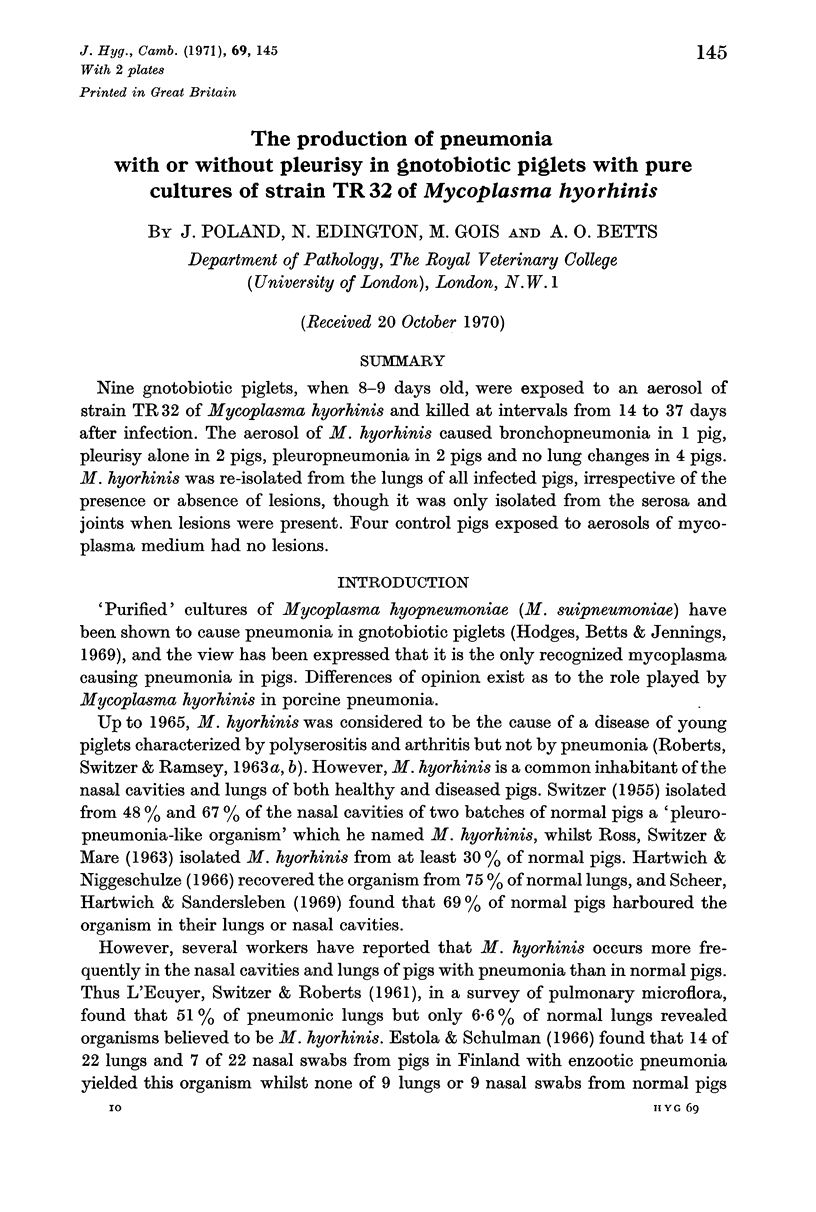
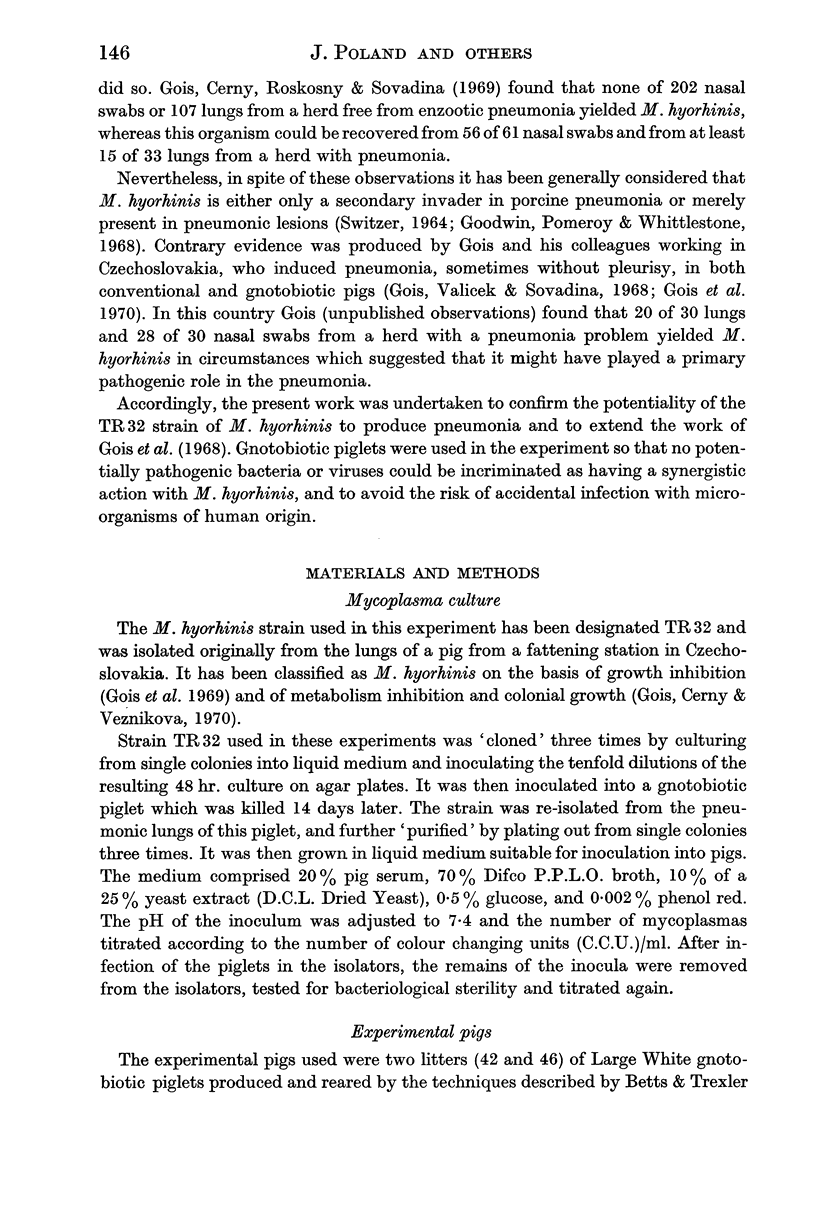
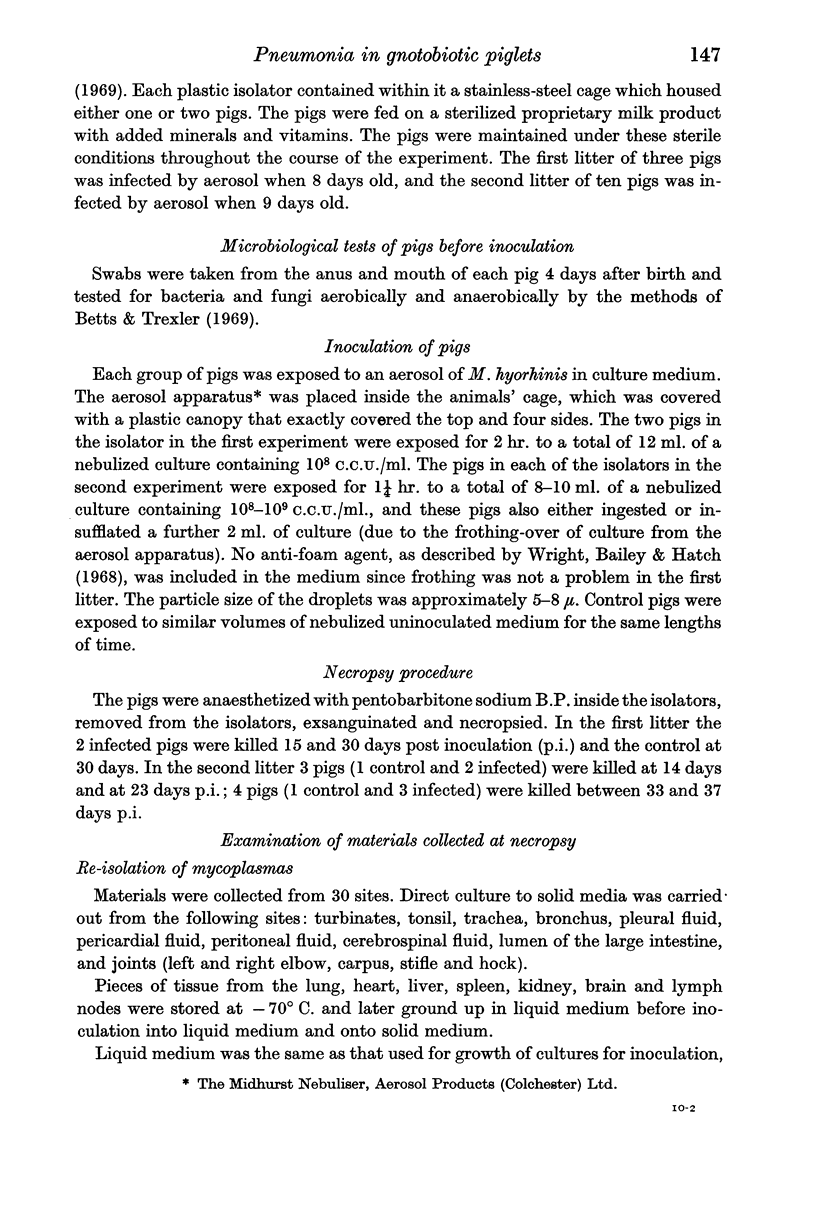
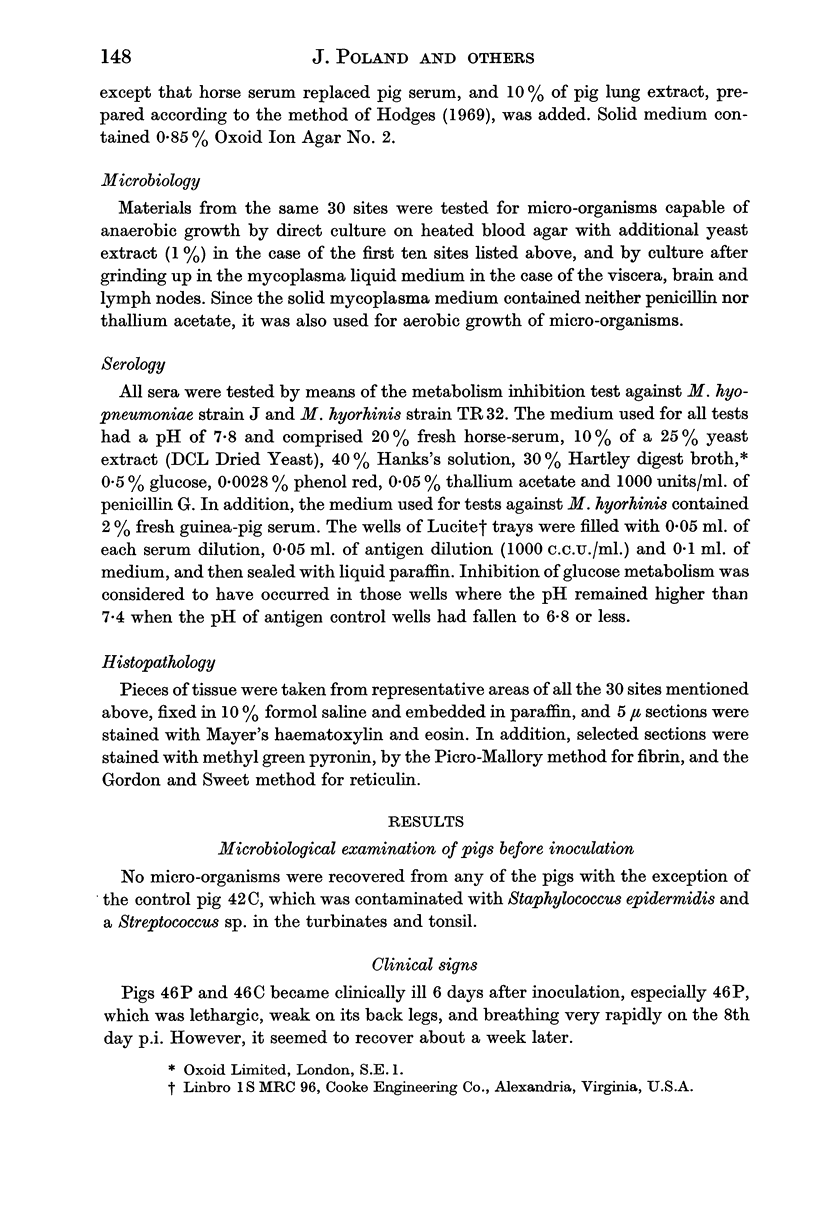
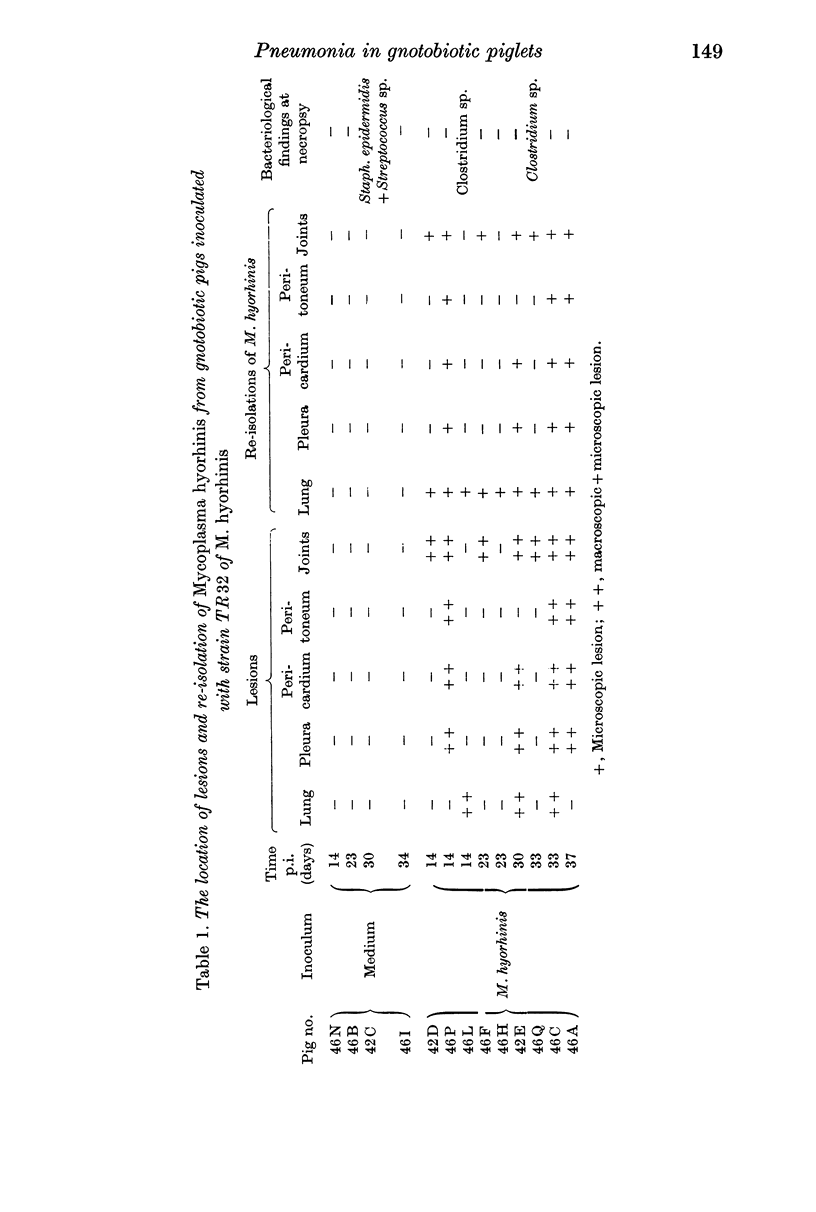
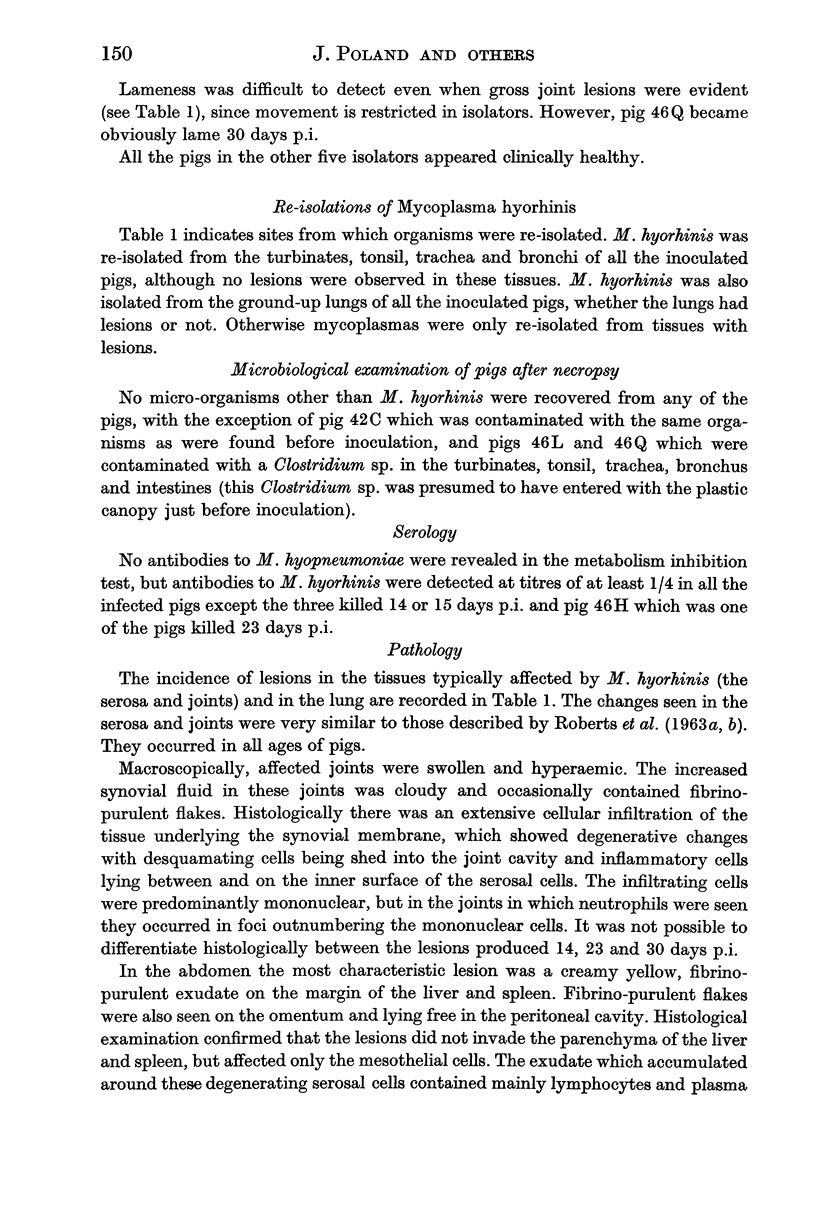
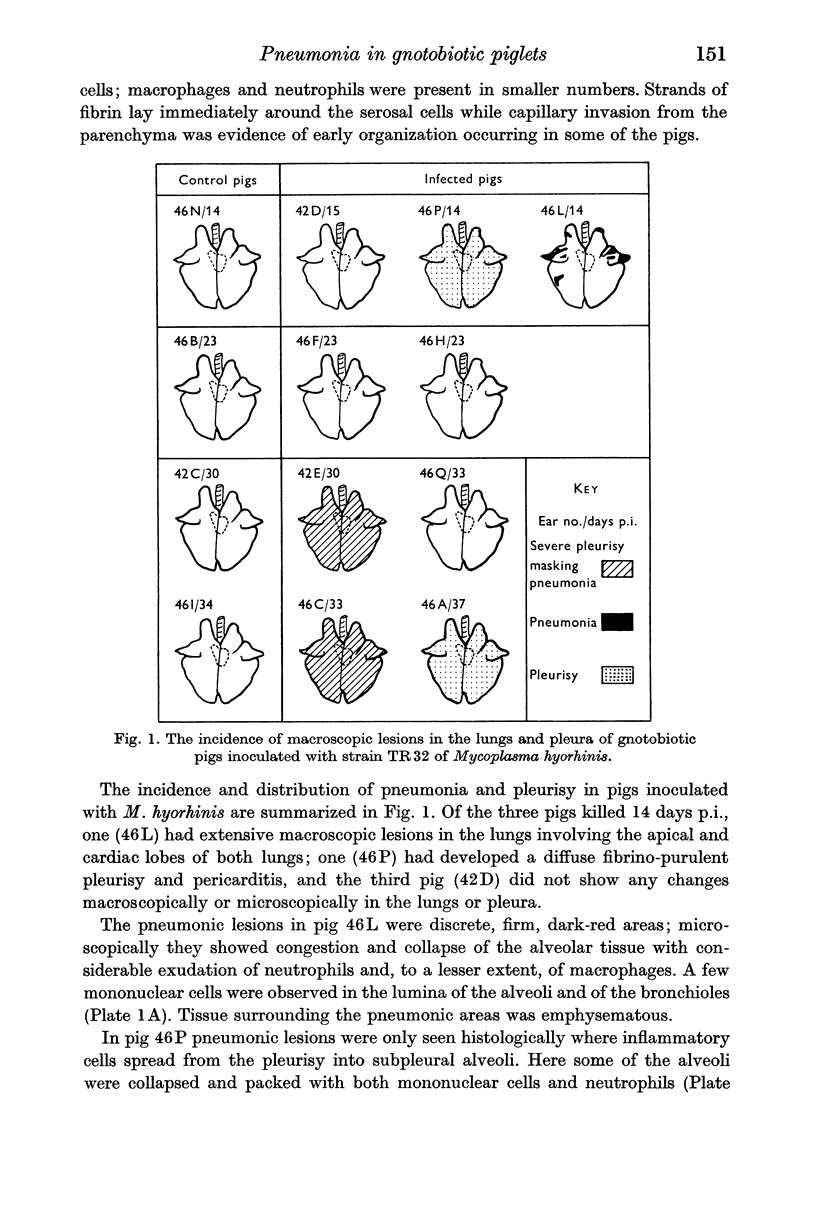
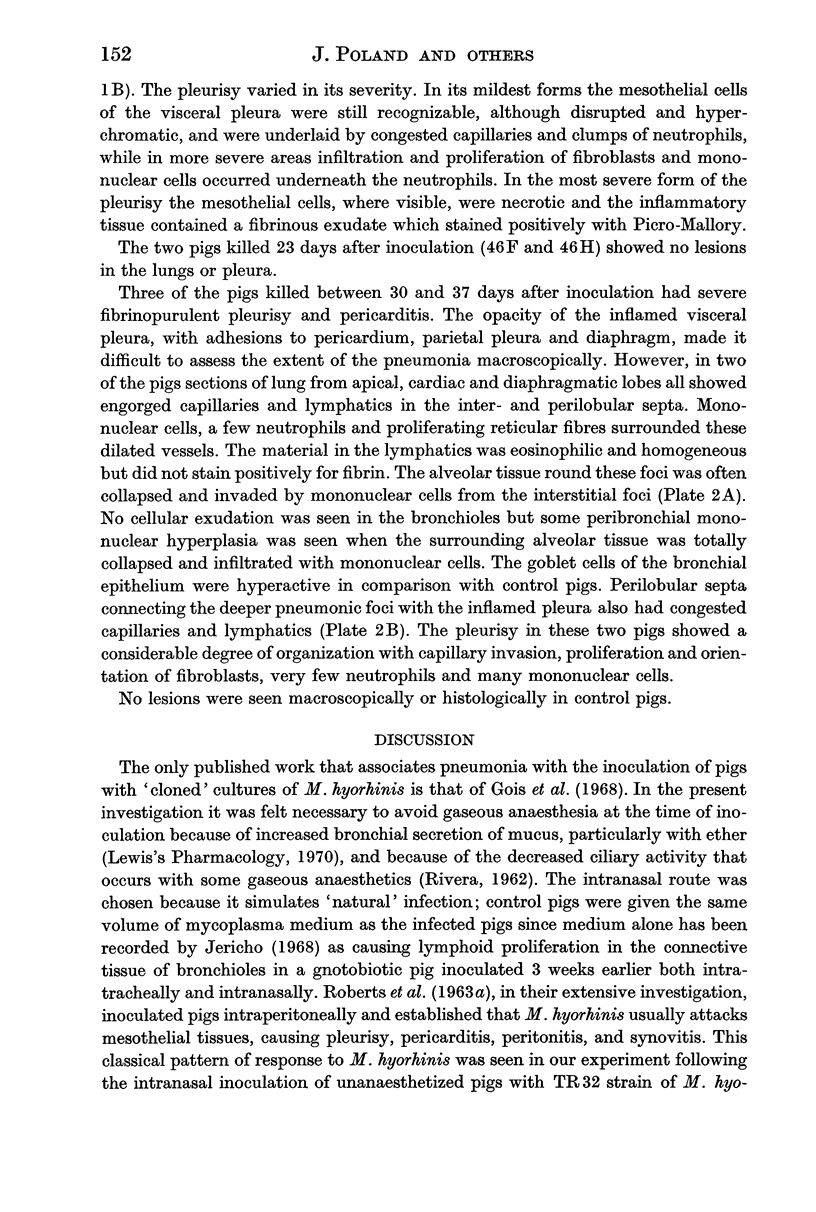
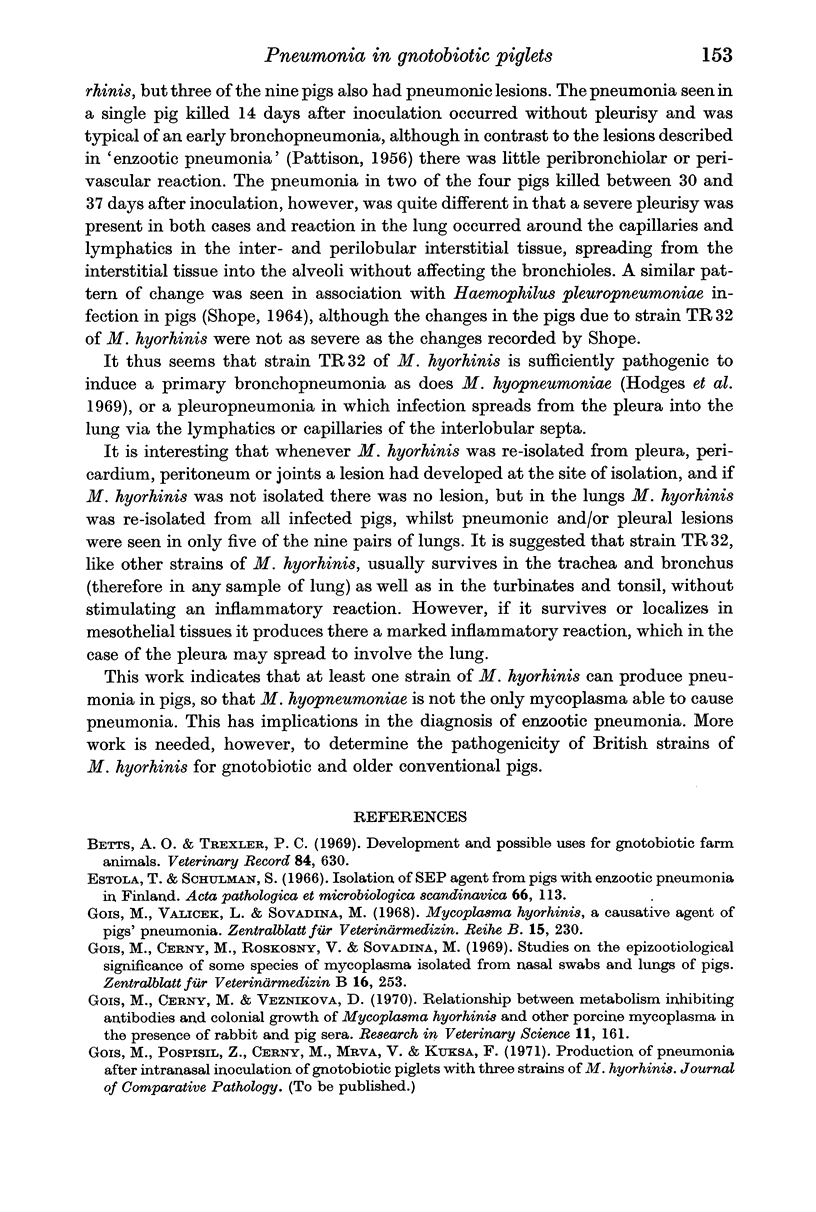
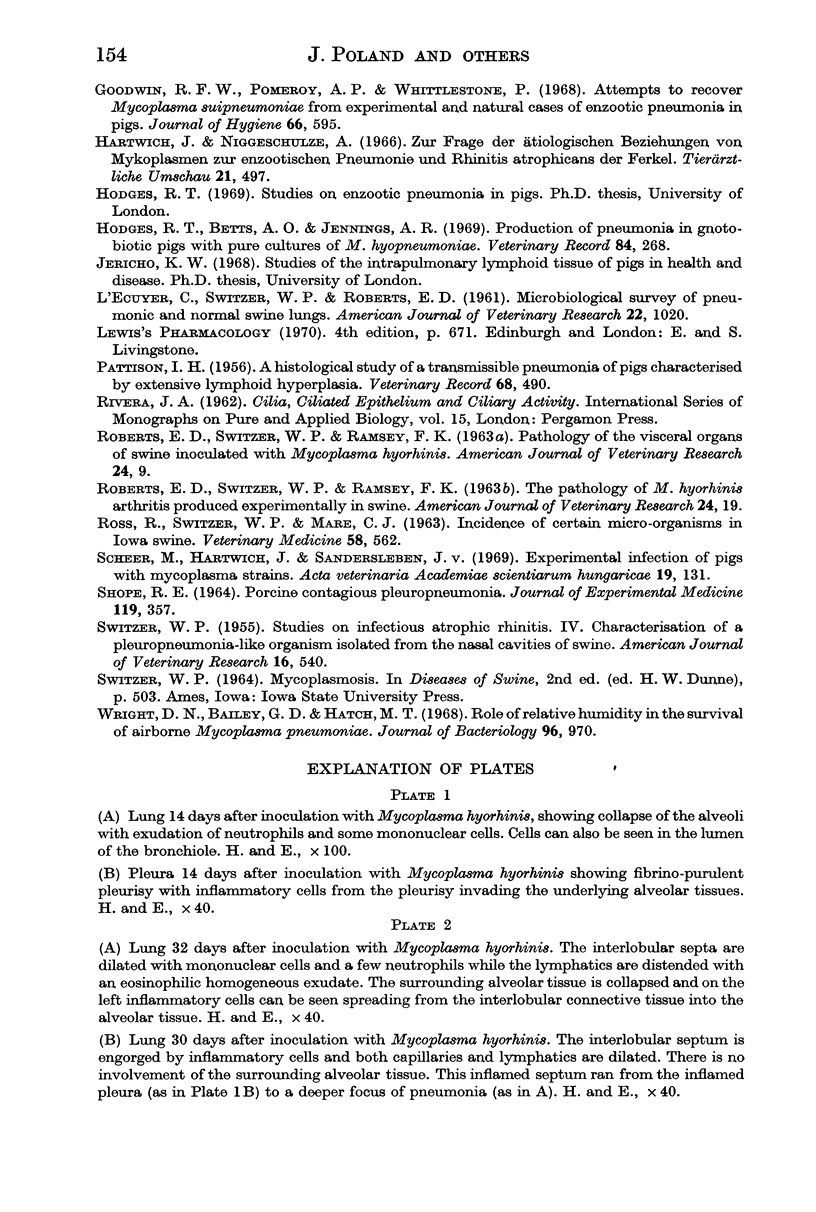
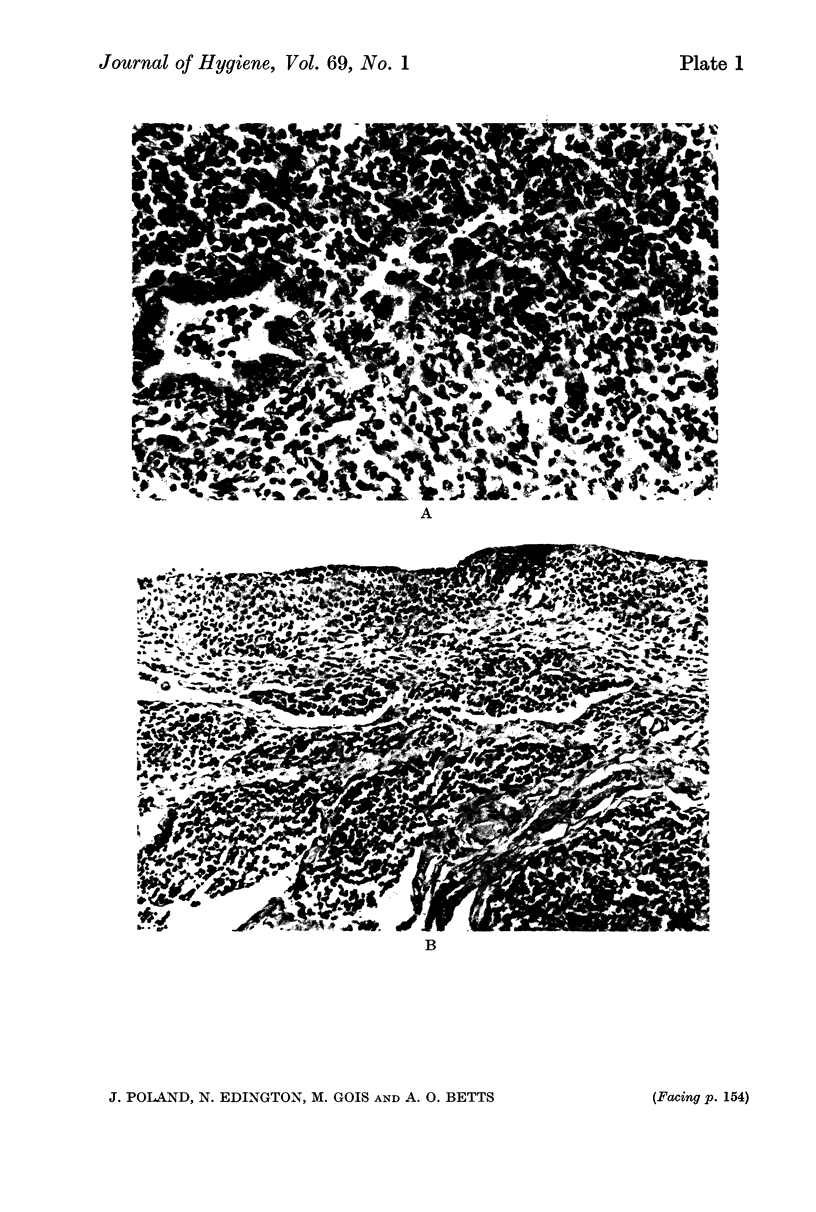
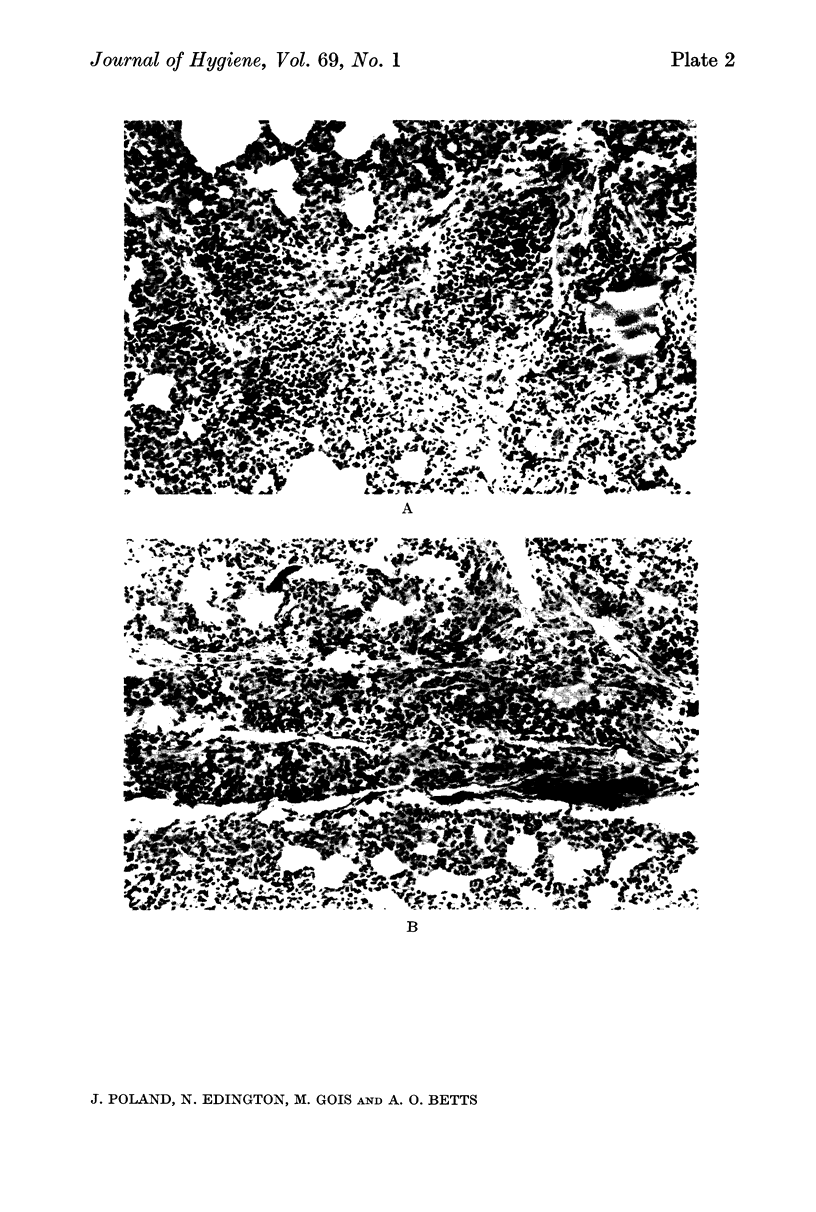
Images in this article
Selected References
These references are in PubMed. This may not be the complete list of references from this article.
- Betts A. O., Trexler P. C. Development and possible uses for gnotobiotic farm animals. Vet Rec. 1969 Jun 21;84(25):630–632. doi: 10.1136/vr.84.25.630. [DOI] [PubMed] [Google Scholar]
- Estola T., Schulman A. Isolation of SEP agent from pigs with enzootic pneumonia in Finland. Acta Pathol Microbiol Scand. 1966;66(1):113–123. doi: 10.1111/apm.1966.66.1.113. [DOI] [PubMed] [Google Scholar]
- Gois M., Cerny M., Veznikova D. Relationship between metabolism-inhibiting antibodies and colonial growth of Mycoplasma hyorhinis and other porcine mycoplasma in the presence of rabbit and pig sera. Res Vet Sci. 1970 Mar;11(2):161–167. [PubMed] [Google Scholar]
- Gois M., Cerný M., Rozkosný V., Sovadina M. Studies on the epizootiological significance of some species of mycoplasma isolated from nasal swabs and lungs of pigs. Zentralbl Veterinarmed B. 1969;16(3):253–265. [PubMed] [Google Scholar]
- Gois M., Valícek L., Sovadina M. Mycoplasma hyorhinis, a causative agent of pig pneumonia. I. Zentralbl Veterinarmed B. 1968 Mar;15(2):230–240. doi: 10.1111/j.1439-0450.1968.tb00311.x. [DOI] [PubMed] [Google Scholar]
- Goodwin R. F., Pomeroy A. P., Whittlestone P. Attempts to recover Mycoplasma suipneumoniae from experimental and natural cases of enzootic pneumonia in pigs. J Hyg (Lond) 1968 Dec;66(4):595–603. doi: 10.1017/s0022172400028333. [DOI] [PMC free article] [PubMed] [Google Scholar]
- Hodges R. T., Betts A. O., Jennings A. R. Production of pneumonia in gnotobiotic pigs with pure cultures of mycoplasma hyopneumoniae. Vet Rec. 1969 Mar 15;84(11):268–273. doi: 10.1136/vr.84.11.268. [DOI] [PubMed] [Google Scholar]
- L'ECUYER C., SWITZER W. P., ROBERTS E. D. Microbiologic survey of pneumonic and normal swine lungs. Am J Vet Res. 1961 Nov;22:1020–1025. [PubMed] [Google Scholar]
- ROBERTS E. D., SWITZER W. P., RAMSEY F. K. Pathology of the visceral organs of swine inoculated with Mycoplasma hyorhinis. Am J Vet Res. 1963 Jan;24:9–18. [PubMed] [Google Scholar]
- SHOPE R. E. PORCINE CONTAGIOUS PLEUROPNEUMONIA. I. EXPERIMENTAL TRANSMISSION, ETIOLOGY, AND PATHOLOGY. J Exp Med. 1964 Mar 1;119:357–368. doi: 10.1084/jem.119.3.357. [DOI] [PMC free article] [PubMed] [Google Scholar]
- SWITZER W. P. Studies on infectious atrophic rhinitis. IV. Characterization of a pleuropneumonia-like organism isolated from the nasal cavities of swine. Am J Vet Res. 1955 Oct;16(61 Pt 1):540–544. [PubMed] [Google Scholar]
- Scheer M., Hartwich J., von Sandersleben J. Experimental infection of pigs with mycoplasma strains. Acta Vet Acad Sci Hung. 1969;19(2):131–136. [PubMed] [Google Scholar]
- Wright D. N., Bailey G. D., Hatch M. T. Role of relative humidity in the survival of airborne Mycoplasma pneumoniae. J Bacteriol. 1968 Oct;96(4):970–974. doi: 10.1128/jb.96.4.970-974.1968. [DOI] [PMC free article] [PubMed] [Google Scholar]






